Our COVID air travel.
On Tuesday last week, my daughter and I decided to look at returning to India at the earliest. An intended six-week sojourn had extended to almost six months. It was a really tough decision to split up the family back again at this time of a pandemic – and frankly, none of us are still at ease. However, there were practical issues that the return, we hoped, would take care of.
There is a torrent of news from various outlets telling one of the ever-evolving procedures for travel – but I wished to know what the official rules and regulations were. With some help, I found the following websites:
For rules on International Arrivals in India:
https://www.civilaviation.gov.in/en/covid-19-vbm
The procedure to take an immediate domestic connection:
https://www.civilaviation.gov.in/sites/default/files/Updation_of_Guidelines.pdf
The rules for each state in India:
https://www.civilaviation.gov.in/sites/default/files/AAI_PDF.pdf
As far as flights are concerned, there ARE multiple options, other than Vande Bharat. With either Bombay or Delhi as first port of arrival in India, Delhi worked best for us. For the origin airport, either Washington DC’s Dulles Airport or Newark’s (NJ) Liberty Airport were ideal. My husband and I also thought it would be best if we took a flight that went directly from the US to India without touching down in any intermediate countries. Given these conditions, we had three options – an Air India from Washington DC to Delhi, another from Newark to Delhi and a United from Newark to Delhi – all were non-stop.
Having looked at flight options AND easy availability of seats, next was to get a COVID test – specifically, an RT-PCR test – essential to avoid institutional quarantine. In my small town in Pennsylvania, there are only three or four entities that do the test in the first place and two said it would take 7-10 days for the results to arrive. The third, the one hospital in town, said it would take 48-72 hours and that we needed a doctor’s prescription to get the test done, even if we were willing to pay fully out of pocket without resorting to health insurance. As I set up the appointment for our tests after receiving the prescription, I asked again if I would definitely get the results at least in 72 hours – the lady at the other end, understanding my situation, took the trouble of calling the testing lab to ascertain this – she said that it was now taking 96 hours of more thanks to the previous Monday having been the Labor Day holiday and all the resulting backlog. The Indian government requires the test to have been done no earlier than 96 hours prior to departure.
Then, I called the group of doctors I had used before (my last appointment in the US had been in 2005) and thankfully, one of them prescribed the test and suggested I get it done in their own lab which offered a 24-48 hour turnaround. My daughter’s pediatrician, also part of the same group, was most understanding as well. It ended up being barely 18 hours to get the test results back! Another difficulty arises from each provider supplying the results using different language – ours, for example, said Nasal Turbinate – the letters RT-PCR show up nowhere – therefore, there was no guarantee that the Indian airport staff would, in fact, understand that we had actually taken the prescribed test. That caused me some anxiety. Ascertaining exactly what constitutes an RT-PCR test itself took some doing. My doctor provided me a document which explained to me that any test that involves a nasal swab (vs. a saliva test) is tested using the RT-PCR (real-time reverse transcription polymerase chain reaction) method. The exact way of taking the nasal sample itself can vary – there is a nasal swab and a naso-pharyngeal swab.
Once we had the test results in hand on Thursday morning, negative as expected, my husband proceeded to book our tickets – the United Airlines from Newark to Delhi seemed particularly good, given that the flight had historically left on time and landed 1 to 2 hours ahead of schedule each day. So UA 801 it was – scheduled departure on Saturday at 9.45 pm Eastern and scheduled arrival on Sunday at 9.30 pm IST.
According to the rules of International arrival, we had to apply for an exemption from institutional quarantine at the Delhi airport website. On Thursday afternoon, after tickets had been booked (one has to enter the flight information) I proceeded to fill in the necessary self-reporting form at https://www.newdelhiairport.in/
The website was a nice one – loaded quickly and was clear and informative for the most part. What was not clear however, to me at any rate, was WHERE exactly I had to click to apply for the exemption. After some exploring, I realised it was the Air Suvidha button at the top right corner. I selected the tab Fill Self-Reporting Form which was very straightforward. Once done, it asked me to check the box saying I agreed to institutional quarantine. I then realised that I had probably filled the wrong form – for while it had asked me to attach a scanned passport copy, it did not ask for the RT-PCR test report. I opened another window and, this time, clicked the Apply for Exemption tab. This was shorter and DID ask for the RT-PCR report. This asked me to check the box agreeing to two weeks of home quarantine, which I had known to expect. The forms were very clear and easy to fill out – absolutely no trouble.
The very next morning, Friday, I had an email in my inbox saying my application for exemption from institutional quarantine had been granted and that I was to carry a hard copy of the attached approval. I was so surprised – the website asks for the exemption to be filed 72 hours earlier, and I could not do so until some 55 hours before, yet, this had gone through like clockwork. At this point, I did heave a sigh of relief.
On Saturday, the day of our departure, we decided to make a family trip of our 4-hour drive into Newark. We left at 9.30 am with my husband and son both driving us down. We had a nice lunch at Saravanaa Bhavan (spelled with the extra ‘a’ and which, interestingly, is better in NJ than it is in Chennai) and spent some relaxed time in Edison NJ where I helped my husband replenish the Indian groceries I had used up at home. We reached Newark before 5 pm and were checked in and through security by 5.30 pm for our 9.45 pm flight. It was a compulsory self-check in including printing of boarding passes AND luggage tags – the first time I am printing and sticking luggage tags myself on my checked-in bags. We then had to go to another counter where the lady verified the passports, weighed the suitcases and put them on the conveyor belt.
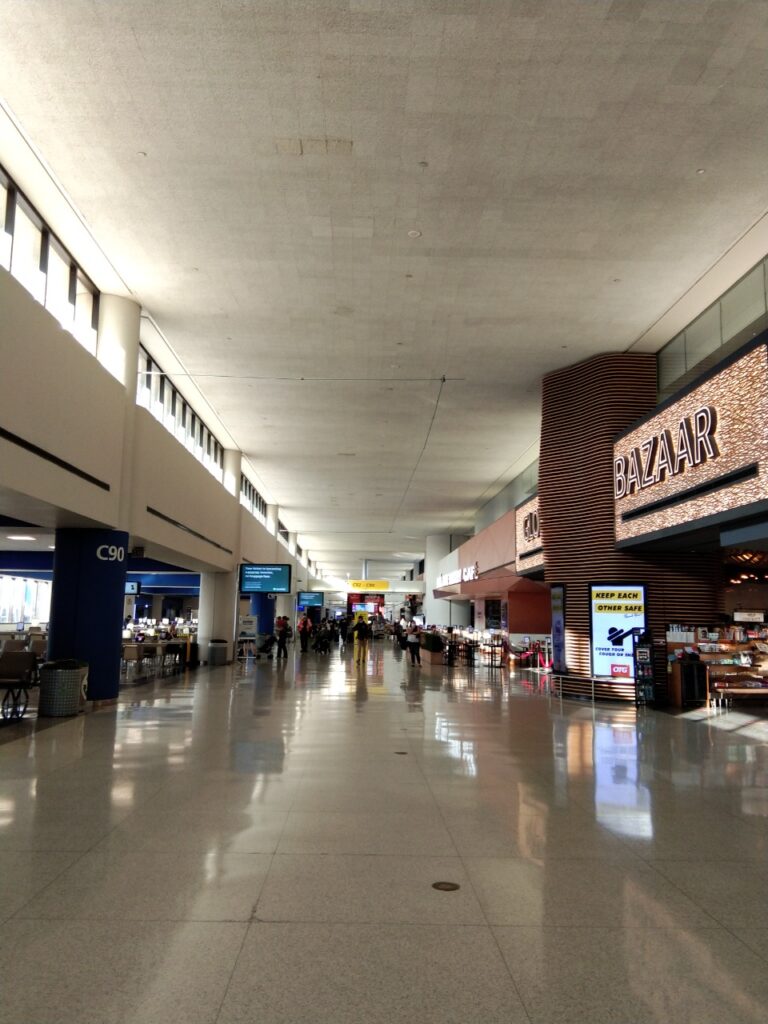
As we walked in, masks on, I was interested to see that practically all the stores and restaurants were functioning inside. While there were definitely less people than pre-COVID (since Newark is a familiar airport for me) there were not so few that it felt unusual. We were in Gate C98. Soon after we made ourselves comfortable, there was an announcement saying the Bombay flight was leaving from that very gate. Not long after that, we were informed that Delhi was departing from C125, which was literally at the other end of the terminal.
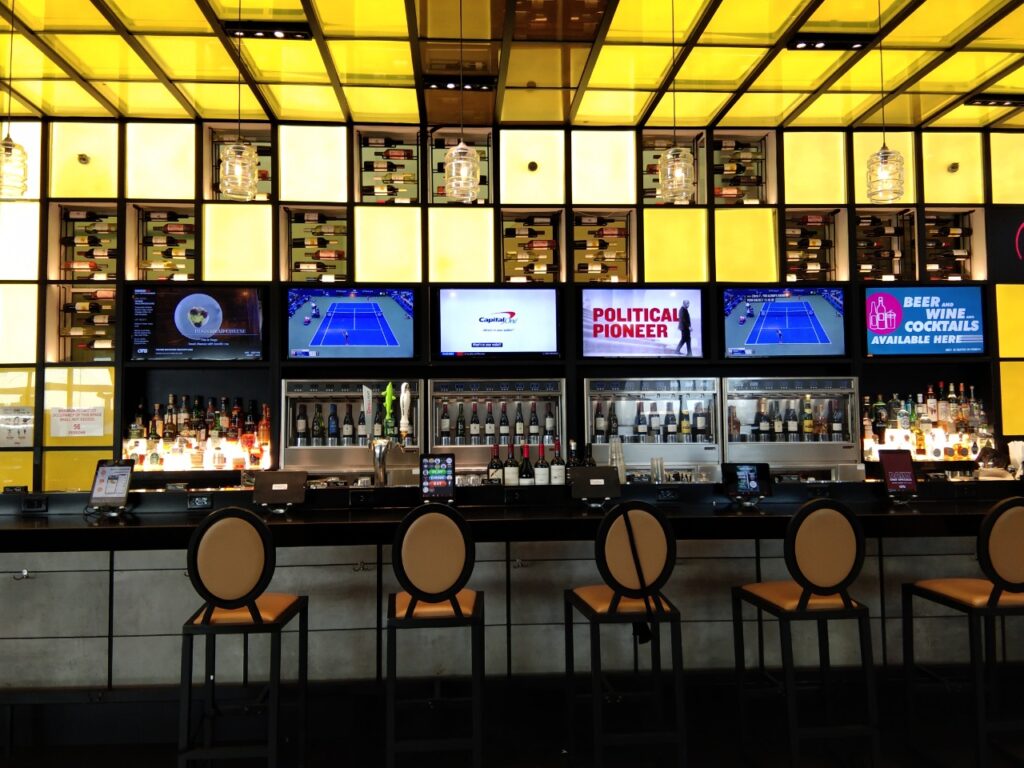
1.5 hours prior to departure, all the waiting passengers at C125 were asked to line up – the UA officials took everyone’s temperature and asked us whether we had filled in both the UA form (which asked for origin address and destination address among other basic details as required by the Indian government) and the self-reporting form (from the Delhi airport website). It was a laborious process, mainly because many passengers, particularly the elderly, were not too fluent in English and had not been properly informed about these new regulations. When it was our turn, I asked the United representative what could have been done to ease this situation – she was very nice and genuinely understanding – she said much of it was caused due to passengers not knowing the language and said it would really help if they just brought something written in English that said they had filled both forms out. If you answered that you had not, you were made to fill it there.
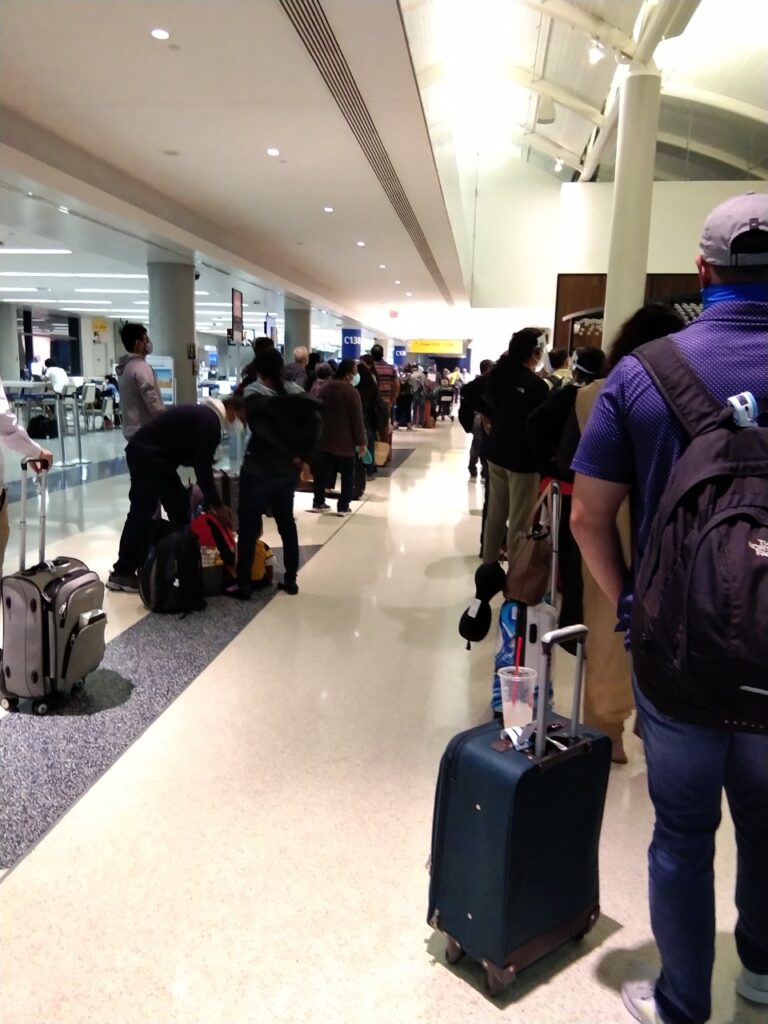
As soon as we crossed that lady was a gentleman waiting with face shields and a plastic raincoat-type garment (think Niagara Falls Maid of the Mist raincoat, only this fastens like a hospital gown at the back). He looked at the boarding passes and asked if we wanted either or both. I asked him if it was necessary to attire ourselves in these other items too. He said it was purely a choice and it was given to us should we feel we wanted them but the airline did not require either. An older passenger right in front of me adviced me thus, “Just take it. Then don’t use it.” Regardless, though, the mask that we already had on was compulsory. We boarded stage by stage – the flight was only about 1/3 full.
The flight was quite normal other than our wearing masks throughout except while partaking of any food or drink. There was a moment of amusement for me when, after the usual safety announcements, the flight attendant added that in the event we needed oxygen masks, we were to put them on AFTER removing our (cloth) masks!
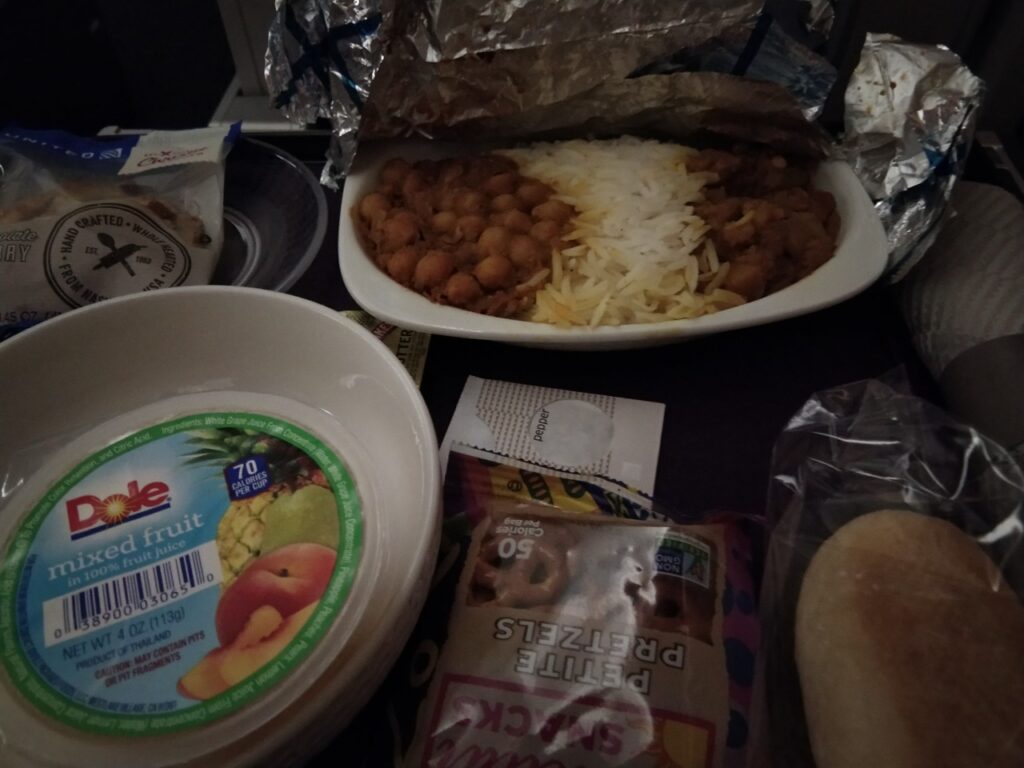
There was a dinner service with a choice of fish and vegetarian (this flight did not allow ordering of special meals ahead of time). The food was quite palatable – basmati rice with chole and a potato curry with a Dole fruit bowl, a white chocolate cranberry cookie, a bread roll and Land O’Lakes butter. Water was provided in bottles. As were other beverages except coffee and tea. The flight attendants minimised walking around the cabin but did the service quite adequately. There were also two snacks – we were asleep through the first one. The second one, served 1.5 hours before arrival in Delhi, was outstanding – a cold mezze platter of tabbouleh salad, pita bread, falafel and hummus – all of them adequately flavoured and seasoned. My husband had told me that food on United was better than most others – it was definitely true of this one.
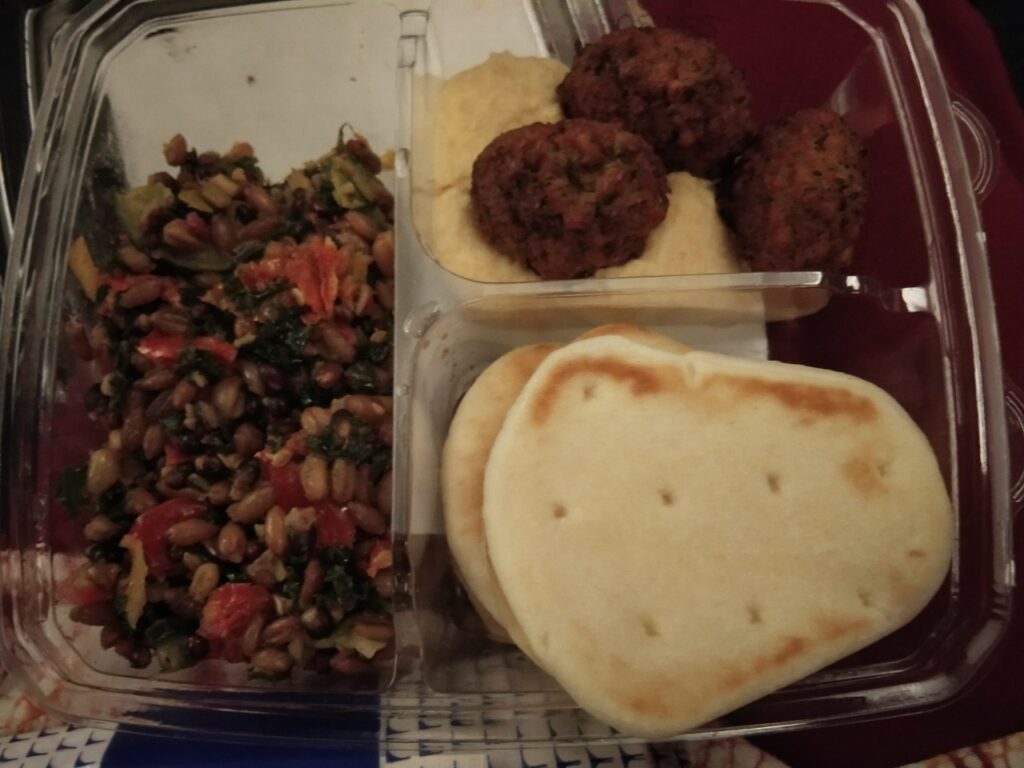
The flight duration was short – one wondered if less air traffic was the reason – 13 hours 15 minutes. Disembarkation was in stages, by ranges of rows called out by the flight attendant. It was very orderly. There were two lines once we got out of the gangplank. One for those with exemption and those without. We followed the exemption line and went through two officers checking boarding passes, passports, exemption certificate etc. The second officer rubber-stamped our left forearms with two stamps – one which had the date and the second that said Home Quarantine. We then proceeded to the Immigration counter that was quite empty. Then the baggage carousel where the suitcases arrived quite quickly and we were on our way out. Quite painless and hassle-free.
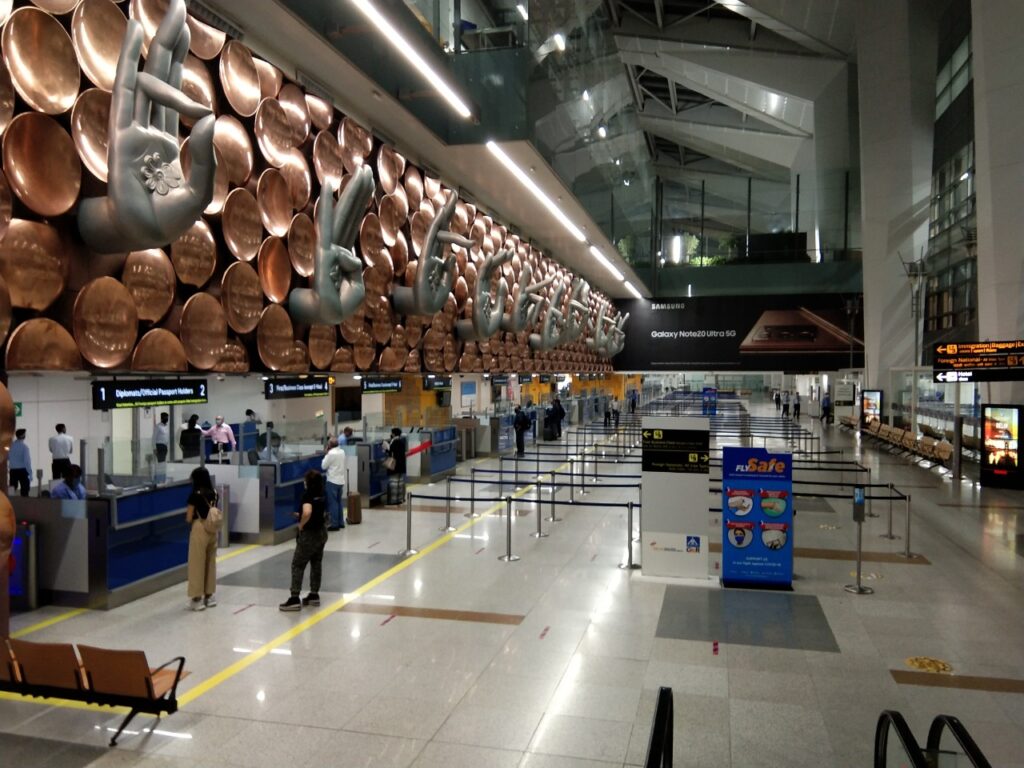
My take after the whole journey? Please do all the research BEFORE you book tickets – find out exactly what needs to be done right from point of departure, for every transit point and your eventual final destination as well. Ensure that the documentation you peruse is the latest one – as mentioned earlier, the rules and regulations are in a constant state of flux. Read whatever else you want but follow only official documentation – do not rely on what you see in papers or hear through the grapevine. Follow every aspect of procedure, however cumbersome it might seem – it could take a little longer but you WILL get home with minimal stress.
Very helpful article. It provides a virtual checklist for all passengers leaving US for India. Thank you. Vidhya, What is the protocol for passengers leaving for their final destination? In your case Chennai.
Thank you, mami. Domestic connections can be taken immediately if passengers have the required exemption. State by state quarantine rules are listed in one of the links I provide in this write up. Tamil Nadu requires a two week quarantine for passengers coming in from any other state too.
Covid19 though invisible is really a tough teacher to encounter. As a person residing in Chennai, Tamilnadu, I dont find the travel restrictions much different between foreign travel and domestic travel. However, you have made a thorough description of procedures on international travel, more particularly the prevailing rules and procedures for those arriving into India from the US. Really, those who plan their trip to India can go through your open letter, and make a successful trip without any hurdles really. I enjoyed reading it. You took the pain to show even the nature of food served at the different servings.
There really aren’t too many differences between domestic and international travel as far as Tamil Nadu is concerned since Tamil Nadu requires a two week quarantine even for domestic travelers from other states. Thank you for the kind words.
Informative and helpful description of your travel experience, Vidya. These are times where even the most stalwart travelers are feeling qualms about traveling, given all the new rules in play. Thanks for detailing the process. It is much appreciated!
Thank you, Radhika. That was the goal. I did not know what to expect at all during this trip and that was disconcerting.
I’ve had good experience with the food in United as well. In fact, the best rasamalai I ever had was on United!
Nice detailed write up.
I can quite believe that. Some desserts, in particular, on airlines, can occasionally beat most of those on the ground. The main entrees, on the other hand, least said the better. But that mezze platter this time? Outstanding. I surprised myself in liking any flight food!
Was it required to have a printed exemption approval or could we show them the mail on the phone
I do not know the authoritative answer to that question. My strong suggestion is that you keep a hard copy on hand. There were passengers whose phone did not turn on – displays can be less than ideal and rather than have someone pore into your phone, a hard copy just makes it so much easier.
Hi Lakshmi (Vidya!), Thanks for writing this up. I’m flying SFO->Bangalore on Friday and loved reading about your experience. I prefer, however, to stop in Frankfurt rather than change planes in India(Delhi or Mumbai). Will connect with you when I’m in India!
I hope you have a good journey! Karnataka has less stringent quarantine regulations from what I can see, as long as you have a negative RT-PCR test. Let me know how the Frankfurt stopover works out! Looking forward to hearing from you.
I don’t intend to use the information out there as I based in India. I have to tell you, though, that it was extremely valuable information (all at one place) for any one intending to do. For the wealth of information and the style of presentation, Hats off ji. BTW, I don’t want to go to Indonesian peanut sauce page again, but a photograph of the sauce would have added value.
Thank you for the kind words and for commenting. The next time I make that noodle, I will take a picture of the sauce and add it to the page. I sincerely appreciate the constructive feedback.